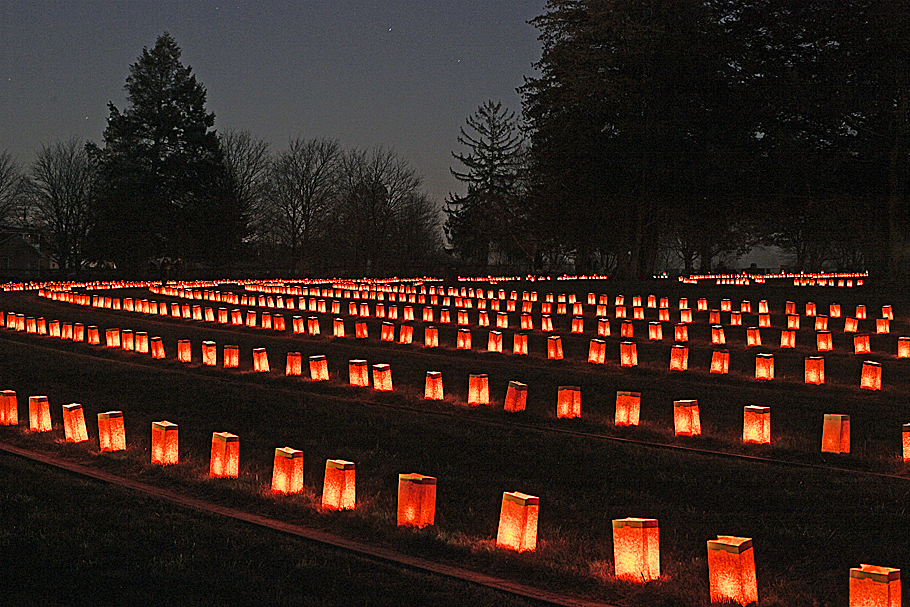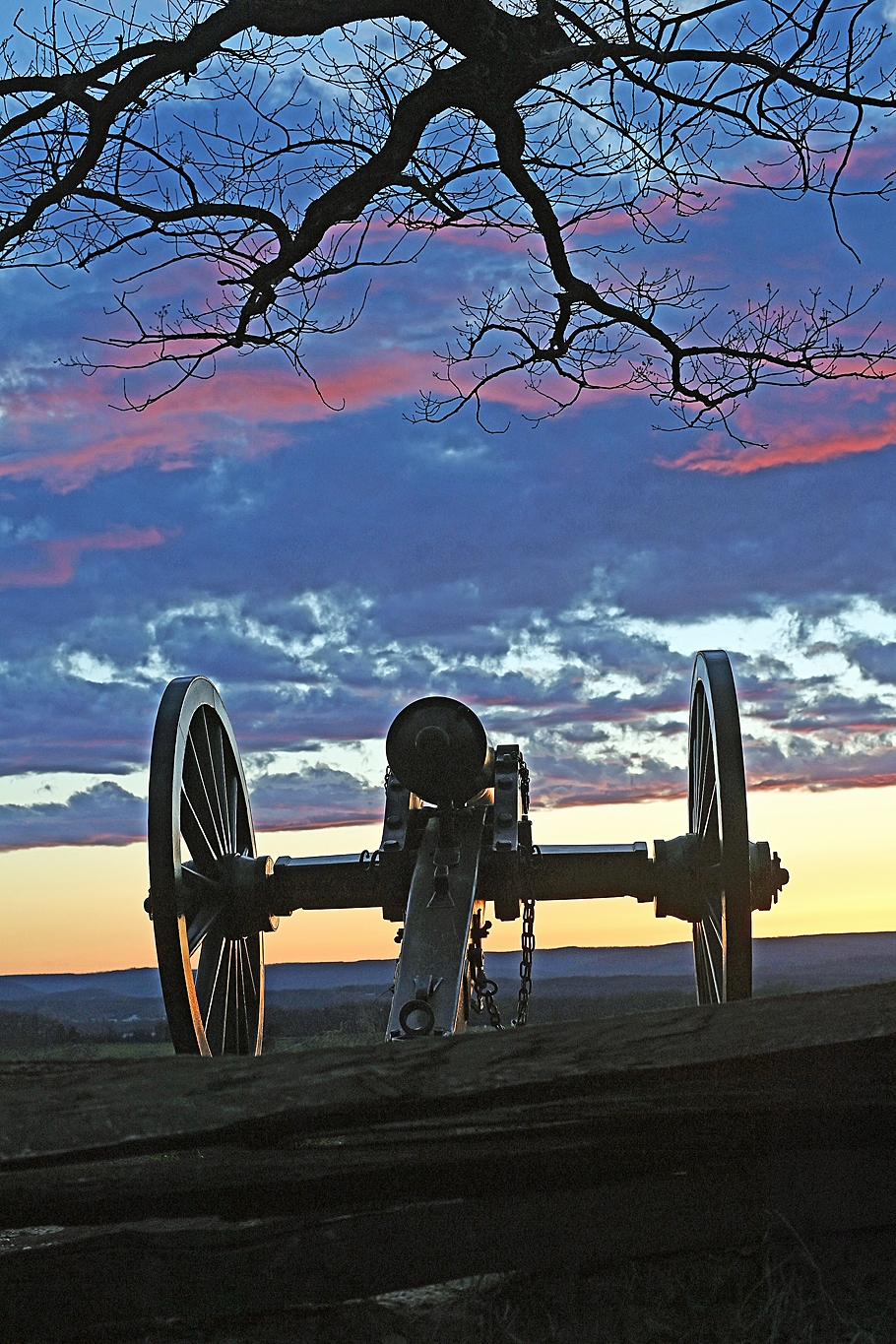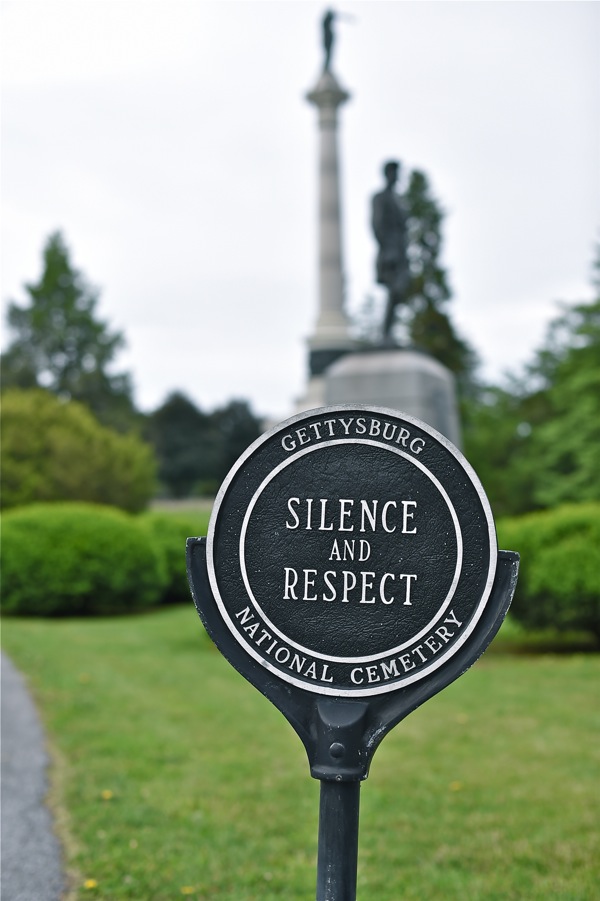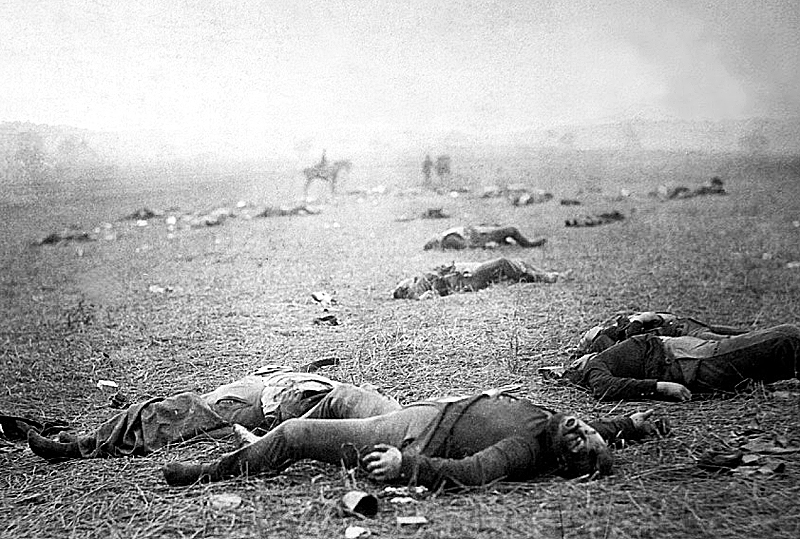
“That from these honored dead we take increased devotion to that cause for which they gave the last full measure of devotion.” – Abraham Lincoln at the dedication of the national cemetery in Gettysburg (above). (Press Pros Feature Photos)
I can almost mark the date when it began…the slow but constant disregard for the darkest hours of our history, because it just doesn’t fit today’s contemporary cultural narrative.
 Gettysburg, PA – As is my custom on Memorial Day, I spend it here in Gettysburg, Pennsylvania, contemplating American History, Memorial Day itself, and the millions of American lives lost to make us what we still claim to be.
Gettysburg, PA – As is my custom on Memorial Day, I spend it here in Gettysburg, Pennsylvania, contemplating American History, Memorial Day itself, and the millions of American lives lost to make us what we still claim to be.
 Because…no one else in the world has walked in and taken it away from us, at least not yet.
Because…no one else in the world has walked in and taken it away from us, at least not yet.
And because, we still have the occasional interest to read about our history, and the freedom to bring it up, I guess, as long as it doesn’t offend anyone. I am willing to take that chance.
Which brings me to my yearly narrative on the reason for Memorial Day, and to Gettysburg, and how here in the very breadbasket of Americans’ will to fight to the death for even dissenting points of view…you don’t find that kind of passion for either like you found a hundred years ago.
Gettysburg is not the historic attraction that it once was, at least from my personal view. It experienced an upsurge immediately after the Ken Burns Public Broadcast series on the Civil War, but in the last decade many of the art stores, the book stores, the relic shops, and the souvenir shops (made in China) have disappeared…replaced by ice cream shops and tattoo parlors.
You still see a few school buses, but not like you used to see, bringing kids to the battlefield for a tour and explanation of the great battle. And they all had to have a kepi (blue or gray) to validate their being here, to go home and say, “I got this at Gettysburg.”
 In fact, I’m willing to bet that 99 out of 100 junior high or high school American History teachers do not know that the Memorial Day holiday, itself, was spawned in tribute to the veterans of that great war, all the way back on May 30, 1868, headed by Union General John A Logan, commemorating the sacrifices of the Civil War soldiers. And when I was eight years old I would go to the local cemetery in Getaway, Ohio with my maternal grandmother to decorate the grave of her uncle, who survived twelve different battles in the war as a member of the Army of The Potomac, an infantryman in the 2nd Virginia Union Regiment. He lived until his 95th year, dying in 1937. Each Memorial Day she would cut fresh dahlia blooms from her flower garden, put them in water, and place them on the footer of his monument.
In fact, I’m willing to bet that 99 out of 100 junior high or high school American History teachers do not know that the Memorial Day holiday, itself, was spawned in tribute to the veterans of that great war, all the way back on May 30, 1868, headed by Union General John A Logan, commemorating the sacrifices of the Civil War soldiers. And when I was eight years old I would go to the local cemetery in Getaway, Ohio with my maternal grandmother to decorate the grave of her uncle, who survived twelve different battles in the war as a member of the Army of The Potomac, an infantryman in the 2nd Virginia Union Regiment. He lived until his 95th year, dying in 1937. Each Memorial Day she would cut fresh dahlia blooms from her flower garden, put them in water, and place them on the footer of his monument.
For years he entertained people in Chesapeake and Ironton by telling the stories of what he had seen and what he endured…his wounds, his starvation, and his walking all the way home from southern Virginia when he was mustered out of the army in the summer of 1864. That is, he walked, mind you…a journey of about six weeks.
 As I wrote previously, I’ve come to Gettysburg for years to be here for this holiday – this celebration of American History, and this commemoration of how we got to be as good, and as tough, and as independent as we were before the recent times of apologizing for the parts of our history that embarrass modern culture.
As I wrote previously, I’ve come to Gettysburg for years to be here for this holiday – this celebration of American History, and this commemoration of how we got to be as good, and as tough, and as independent as we were before the recent times of apologizing for the parts of our history that embarrass modern culture.
In fact, when I first began to visit Gettysburg in earnest, in 1985, the introductory movie at the old visitor’s center went into great length to explain the course of the battle and the soldiers on the field…both sides. The subject was the war. The subject was the fighting, and a people’s willingness to die to preserve what their ancestors had died for just a century earlier.
Now the tenor of that introduction is quite different. It’s Morgan Freeman explaining not the soldiers role in the fighting, but a new birth of freedom, denoting Gettysburg as the high water mark of the war’s mission to abolish slavery. He says nothing about other truths left out – loathing of the Federal government by the South, and Lee’s army invading Pennsylvania for sustenance, because the soldiers, as well as many people in war-ravaged Virginia, were literally barefoot, ragged, and starving. It was all in the original Welcome Center script, that and the number of casualties for four and one-half years of fighting in that great war, for whatever reason you choose to embrace…650,000! But you won’t hear it now.

An Alexander Gardner image taken days after Gettysburg on the Rose Farm, south of Little Round Top.
In 1985 Matthew Brady’s and Alexander Gardner’s black and white images were everywhere to see in the trinket and relic shops in Gettysburg. Now, they’re more obscure, if you can find them at all. The photos here of the Confederate dead on the Rose Farm, after the second day of fighting, is one of the iconic images published for a hundred years after the war, graphically detailing the horrors of what clean-up crews seen in the background found after the armies evacuated Gettysburg.
They were published back then as a reminder of the cost of the freedoms that we enjoy and observe a century later, but without the guilt found in Lincoln’s words in his address at Gettysburg when he put it plainly…the last full measure of their devotion.

Publisher Sonny Fulks writes OHSAA sports and the Buckeyes for Press Pros Magazine.
Today we take it for granted, despite the casualties suffered by fighting men and women around the world…because it doesn’t happen here on American soil.
And it’s likely that we’ll never again see an American the likes of those fighting men in the 19th century who were willing to sell out in the manner they did because it meant that much, and they didn’t question. Today, we’re too sophisticated for that.
But it would be interesting.
“You can disrespect Pickett’s Charge on the basis of fighting for the preservation of states’ rights,” historian Shelby Foote once said to a questioner at one of his lectures, guaranteeing that we are not the same people of that time, Union or Confederate, at 4 pm on July 3, 1863. “We don’t make people like that in America, not anymore.”
If that’s so, it’s because of the lasting legacy of those who were there first, and willing to sacrifice in a manner that taught us an eternal appreciation not unlike that of Jesus Christ and his sacrifice for the sins of mankind. What greater sacrifice…than that of anyone willing to lay down his life for another.
And yet, on this particular Memorial Day, culture has abandoned them equally…Calvary and Gettysburg.
